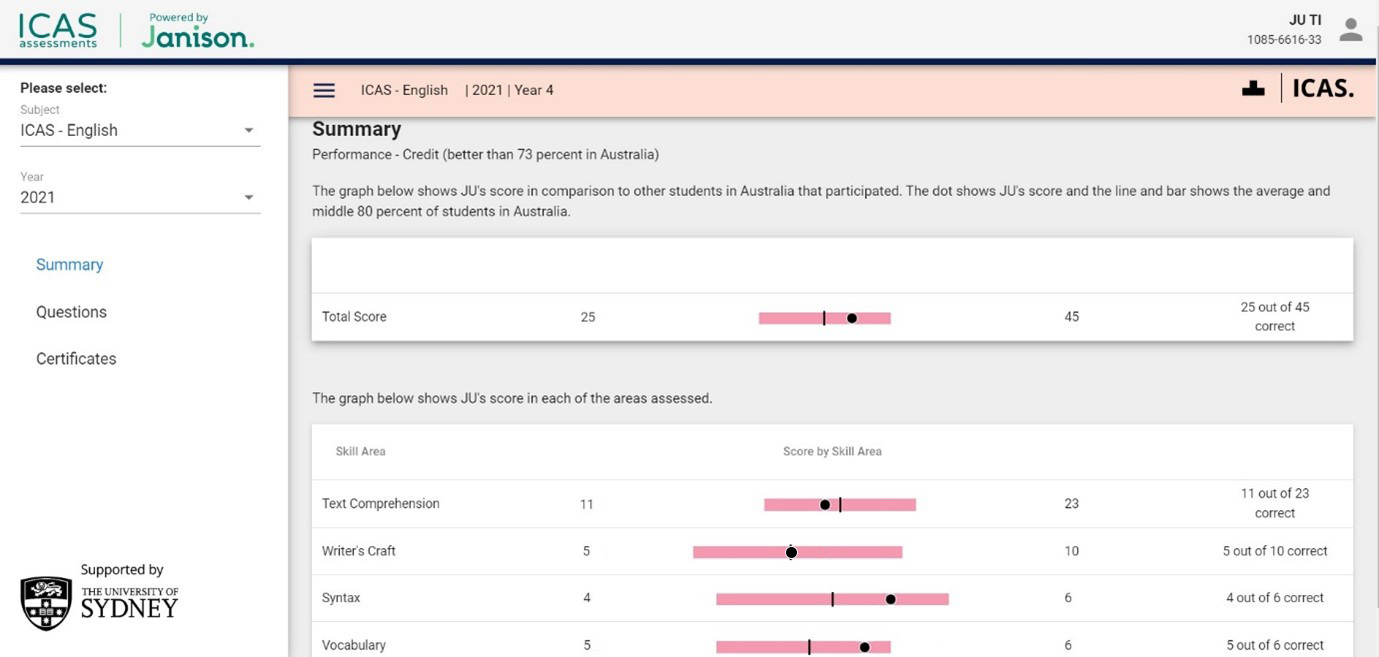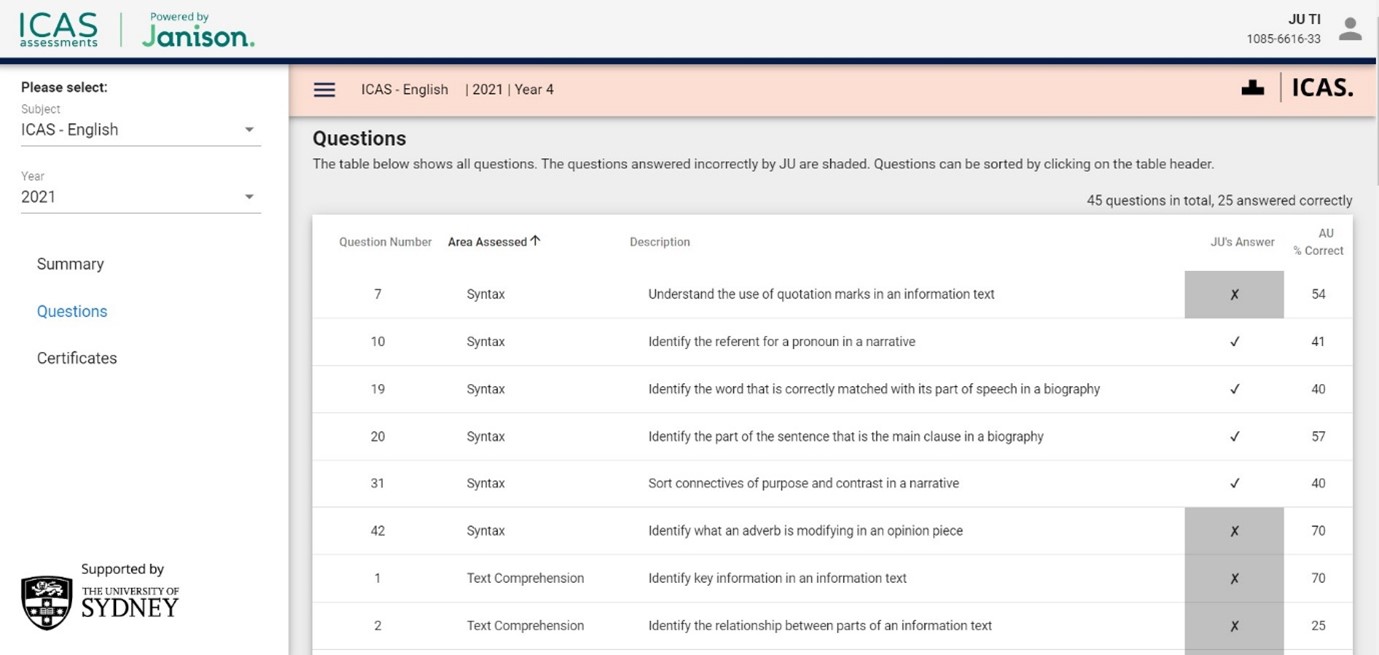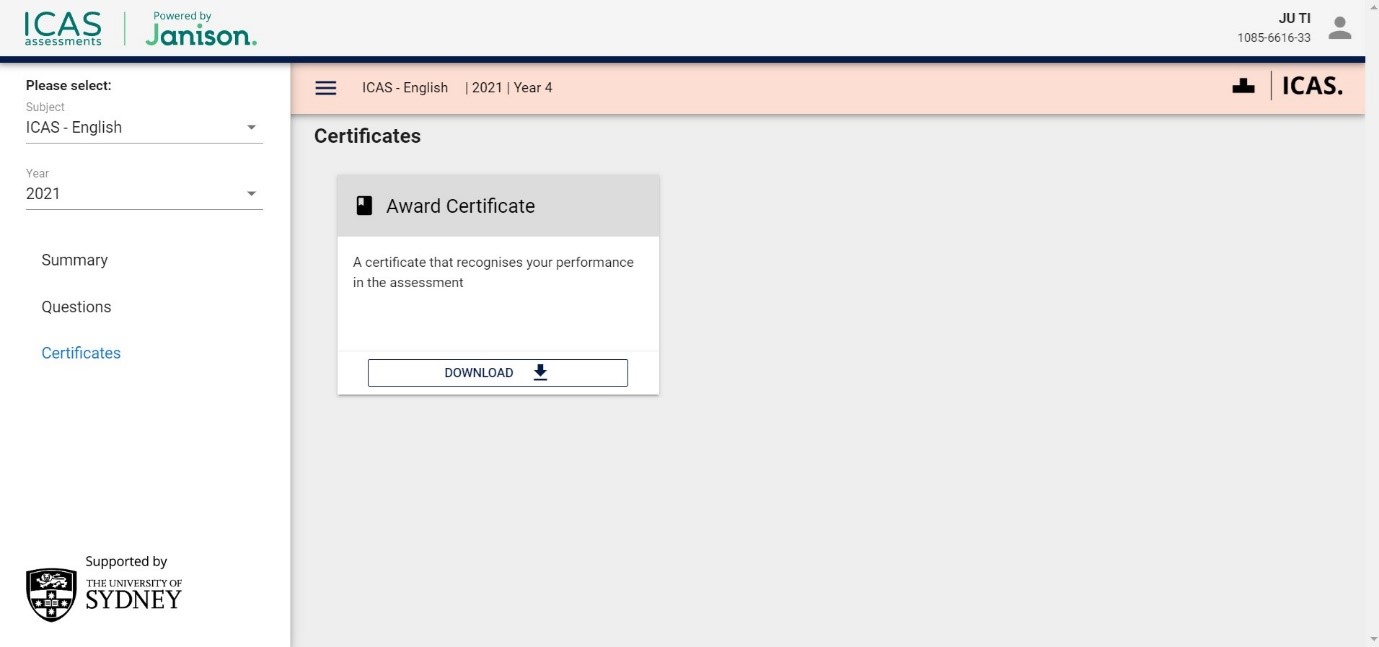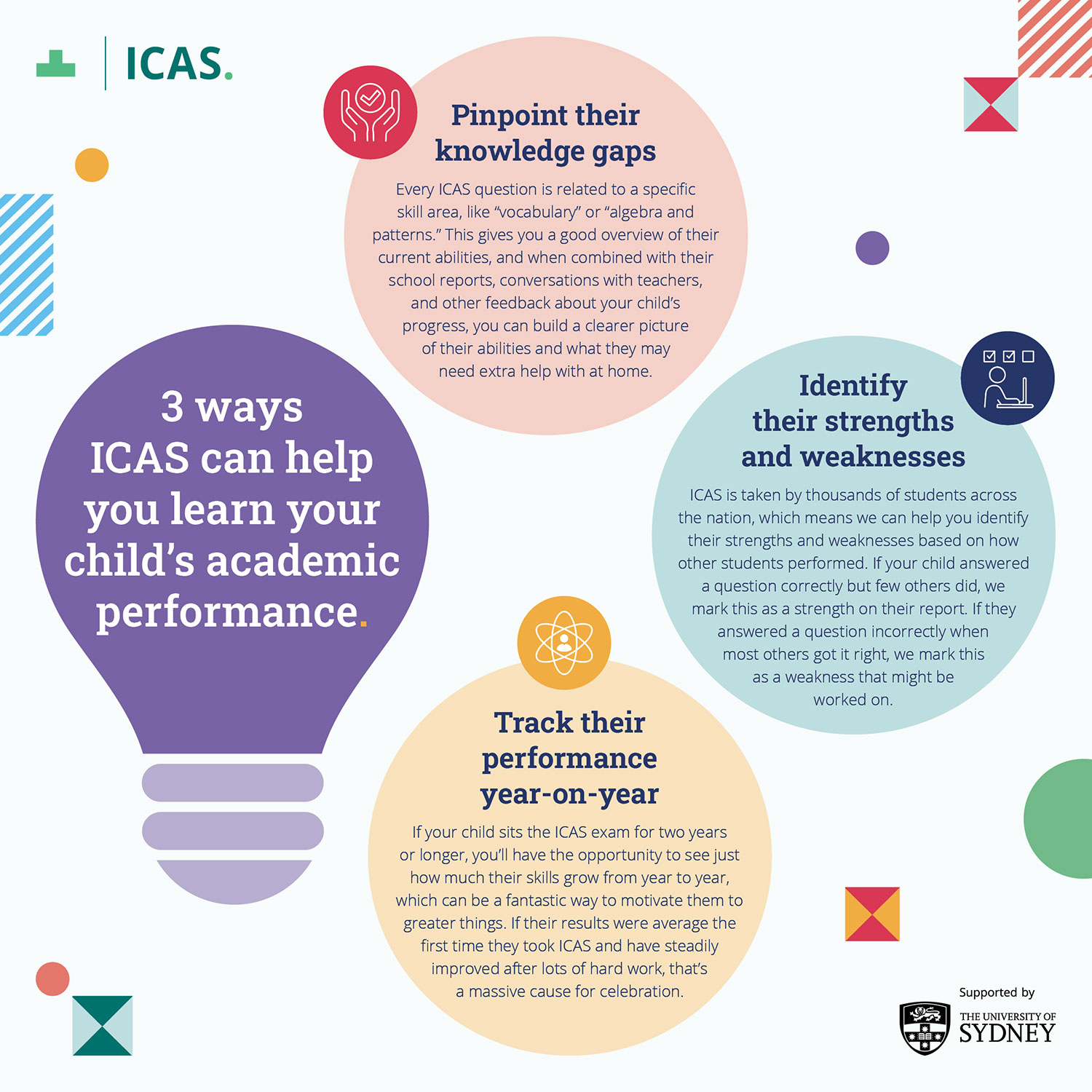How to use ICAS results to learn your child’s performance

As a parent who is invested in your child’s education, you probably welcome any kind of data that tells you how they’re performing at school. Reports and interviews offered by teachers are insightful, but there’s another form of concrete, no-nonsense data that evaluates your child’s strengths and weaknesses for core subjects like English, Maths and Science: ICAS results.
The results that your child receives for ICAS can complement the feedback you receive elsewhere for their schooling, helping you to build a clearer picture of their academic progress. Here are some ways to make the most of the results they receive for ICAS.
1. Pinpoint their broad knowledge gaps by skill area

Every ICAS question is related to a particular skill area being assessed, like “Vocabulary” for English or “Algebra and patterns” for Maths (these are also clearly marked in our latest 2018 ICAS past papers). For a broad view of your child’s performance for each skill, you can jump into the summary report for a subject and see exactly how they performed against the rest of the country. This is shown as both a graphical scale as well as precise numbers, as presented in the image above.
This data gives you a good overview of your child’s current abilities for every key skill area in which they’ve been tested for ICAS, and when combined with their school reports, conversations with teachers, and other forms of feedback about your child’s progress, you’re able to build a clearer picture of their abilities and what they may need help with at home.
For example, looking at Ju’s results above, you can see that he scored well on vocabulary but low for text comprehension, and if this reflects previous feedback from his teachers, it might be something that his parents can help him with at home, perhaps with recommendations from his teacher. This kind of regular help and discussion with your child can help them develop higher-order thinking skills and allow them to not only understand different text formats, but more importantly, the world in which they live. In fact, ICAS is specifically designed to test children’s ability to think critically, solve problems, transfer skills to new contexts, and demonstrate other higher-order thinking skills. That’s why ICAS results can help you to build a more rounded, vivid picture of your child’s academic progress.
2. Identify their strengths and weaknesses for specific questions

When viewing your child’s ICAS results for a subject, you can see which specific questions they scored correctly or incorrectly (you’ll just see a description of the question rather than the question itself). This gives you greater depth than the summary report because it illuminates the precise skills that may need to be worked on, as well as content areas where they are already competent but may want to expand their knowledge further. Again this data should always be combined with feedback or results elsewhere in your child’s schooling to ensure its accuracy.
You can also delve deeper and learn how the nation’s students performed for each ICAS question. If 80% of students got a question right but your child didn’t, which happened consistently for a particular skill area for both ICAS and other assessments they’ve taken, you may have identified something that needs to be improved. They may just need some additional support for the foundational elements of that skill area. At the other end of the scale, if you notice your child is correctly answering questions that few other students did, and again, this is combined with previous results or feedback from teachers, this tells you which areas they are excelling. It might even provide clues as to possible future careers, using skills such as maths, digital technologies, writing, or another!
The precise breakdown of answers and their comparison against national averages gives you clues for what your child may need to work on next, helping them to round out their skills and achieve bigger and better things in the classroom (no other Australia academic competitions do this, by the way). When next year’s ICAS is complete, you’ll (hopefully) be able to see the fruits of their hard work.
3. Track your child’s performance year on year
Growth is the defining factor of childhood, both physically and mentally. If your child sits the ICAS exam for two years or longer, you’ll have the opportunity to see just how much their skills grow from year to year, which can be a fantastic way to motivate them to greater things. If their results were average the first time they took ICAS and have steadily improved after lots of hard work, that’s a massive cause for celebration.
You’ll have access to this yearly results data for as long as you need, and it can be retrieved by changing the “Year” filter in the left-hand menu.
4. Access their certificates to include in school applications or scholarships

Getting high ICAS marks can help with your child’s future school applications or scholarships, especially if they gain a high distinction or win a medal. We send printed certificates to every student that participates in ICAS, but in case one is misplaced, we offer them as downloadable documents in the results portal.
How to use ICAS results – summary
Aside from being a way to motivate your child onto bigger and better things, ICAS provides you with a wealth of insights into their skills. When combined with feedback from reports, teachers, and other areas, this allows you to better understand their individual talents, their needs, and what you might do to guide them to success.

Nardin is a former primary school teacher of 10 years. During her time as a teacher, she served as Head of Years for K-2, was a trained NAPLAN marker, and was part of the team that wrote the 2021 NSW English Syllabus 3-6. She is currently an assessment consultant for ICAS and Reach.
Tag:ICAS, icas results
 Written by Nardin Hanna
Written by Nardin Hanna


